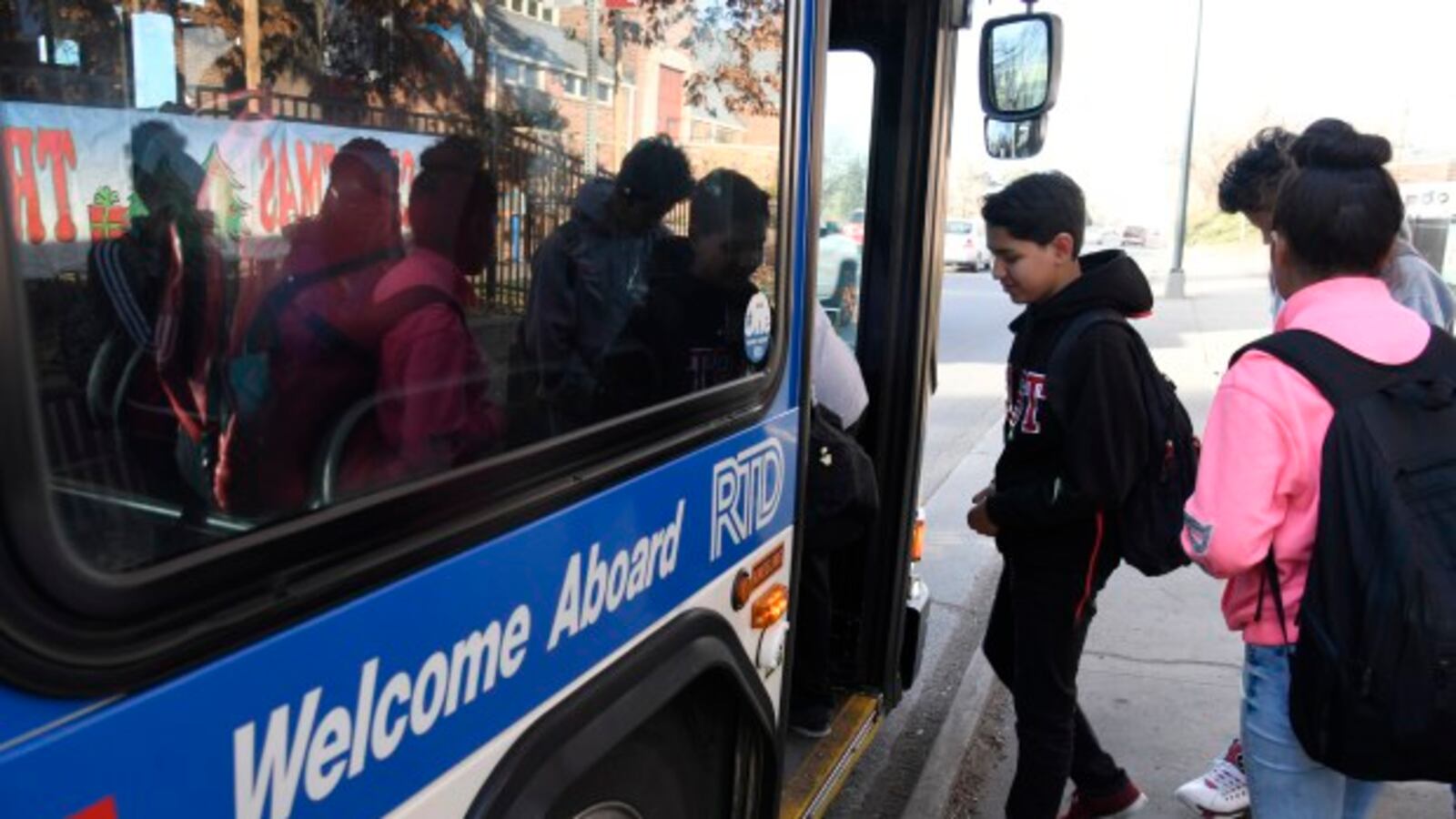Indianapolis Public Schools is launching a district-wide pilot this year that will give more than 5,000 high school students access to free bus passes. But public buses won’t be replacing yellow school buses anytime soon.
The pilot aims to help the district, which has long provided its own bus service, determine whether the public IndyGo system can transport high schoolers — and potentially save the schools more than $11 million each year, according to district officials. It’s an essential prong of the financial overhaul Indianapolis Public Schools began last year to win support from the Indy Chamber for a tax measure to increase school funding.
It remains uncertain, however, how many high school students will be able to rely on the city’s long-starved transit system to get to school if the district eventually stops providing buses.
Indianapolis is a car city, and years of under-investment in public transit and car-centric planning have made it challenging to serve all neighborhoods with buses, said Bryan Luellen, Vice President of Public Affairs for IndyGo. Some areas are not pedestrian-friendly or dense enough to support frequent routes, he said.
City buses don’t fit every context, Luellen said. “We’re focusing on where mass transit makes sense.”
“Potentially, there are always going to be some kids who aren’t located in a place where they can safely walk to a bus route,” he said. “We’re really working to mesh the two services…so that we are not duplicating each other.”
Indianapolis Public Schools officials specifically raised concerns that the Northwest and Northeast sides of the district won’t have adequate service.
Still, the public transit system is in the midst of a massive expansion that district and city leaders hope will enable it to adequately serve high schoolers. Voters approved a tax hike to support public transit, and construction is almost complete on the Red Line, the first of three planned bus rapid transit routes to help speed up service in the coming years. At the same time, IndyGo is aiming to significantly increase frequency on other routes.
For many students, public transit will likely be a reasonable route to school. Buses stop at least every half hour at all four traditional Indianapolis Public Schools, and three of the schools will be served by planned rapid transit lines, Luellen said. About 80% to 85% of students live within a reasonable walking distance to an IndyGo stop, he said.
The district ran a smaller IndyGo pilot last year, but there was no strategy for encouraging students to use the buses, said Dennis Tackitt, the district’s chief of transformation. This year, the district aims to boost ridership by doing more outreach to parents and students, he said.
“We want to build ridership,” Tackitt said. “We want to help our community understand that this is a viable option not only now but well into the future.”
Cutting transportation costs is key to balancing the district’s budget in the long term. Busing is unusually costly in Indianapolis Public Schools compared with other school systems, in part because the district ferries students to specialized schools throughout the city.
The district spends about $12 million each year busing high school students, district officials said. In contrast, relying on public buses would cost about $500,000 per year, according to estimates.
But there are potential pitfalls to the switch, including inadequate access and low participation, and district leaders want more data before deciding. Over the next two years, high schoolers will be able to ride city buses for free anytime, including taking public buses to and from school. If the pilot goes well, the district would consider eliminating or reducing yellow bus transportation for high schoolers in 2021-22.
“I don’t want to understate the complexities,” Superintendent Aleesia Johnson said. “There’s a lot to do, which is why I think having a two-year pilot is going to give us the runway we need to be able to decide — is this something that we can implement at scale?”


